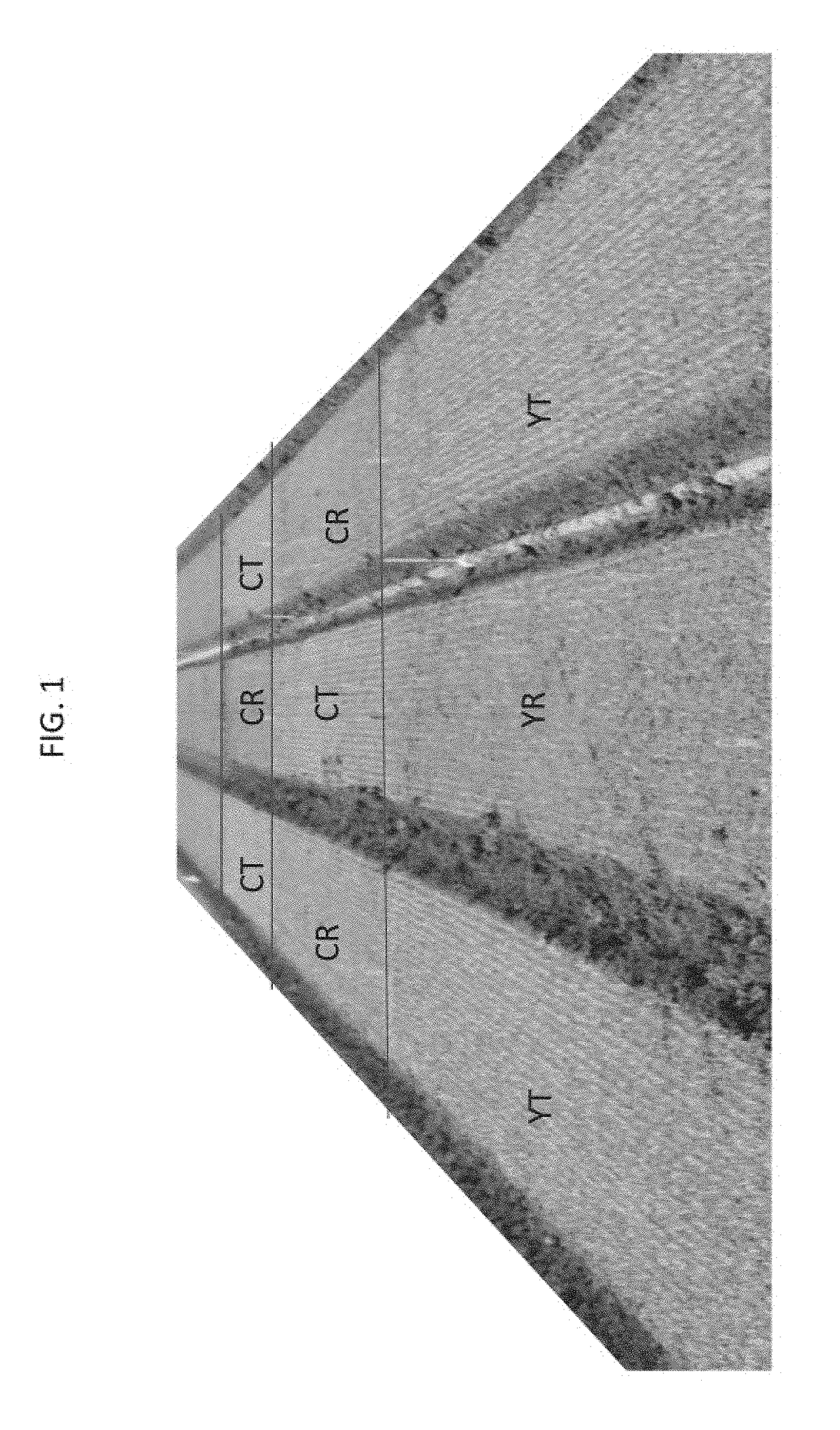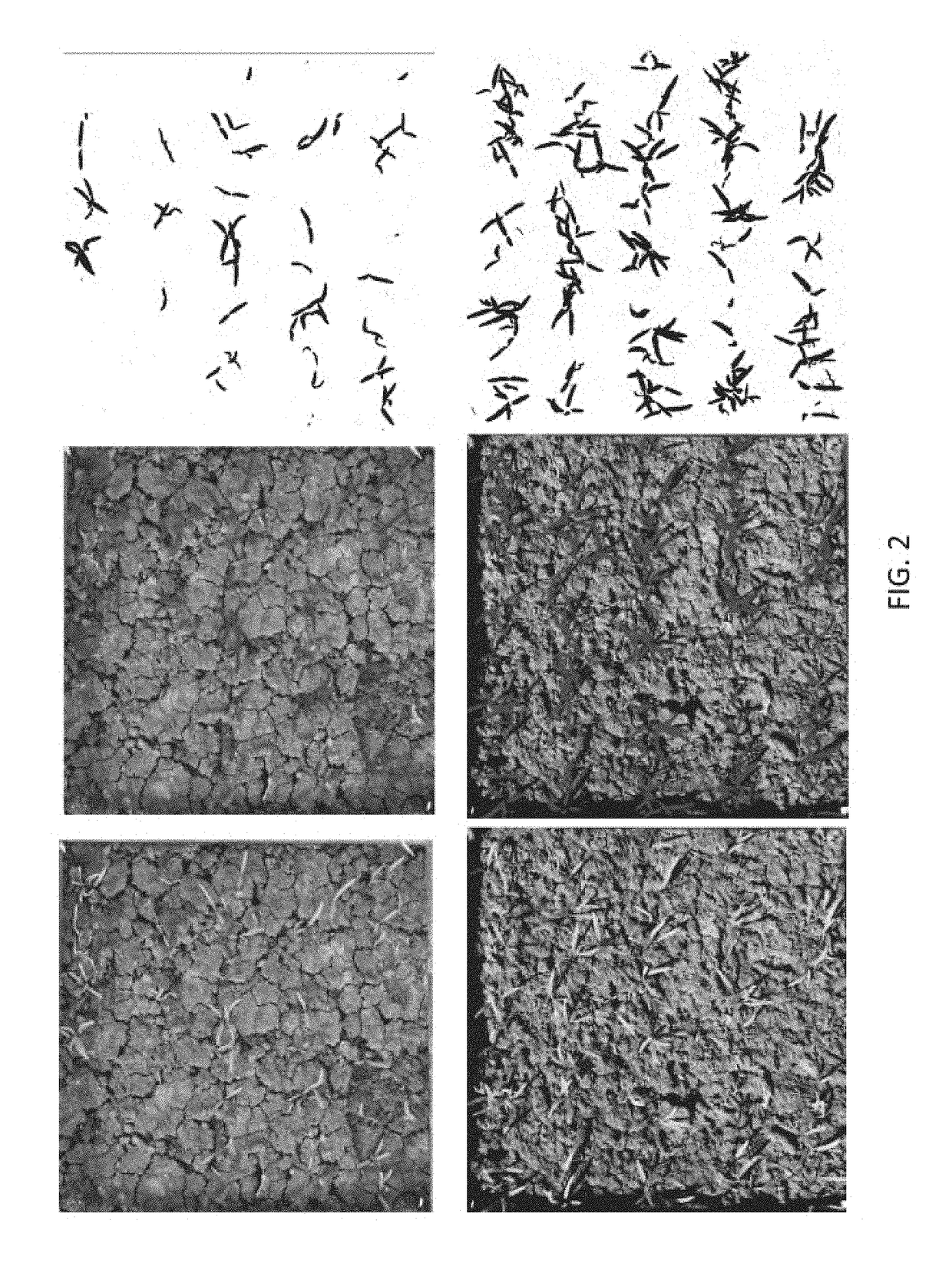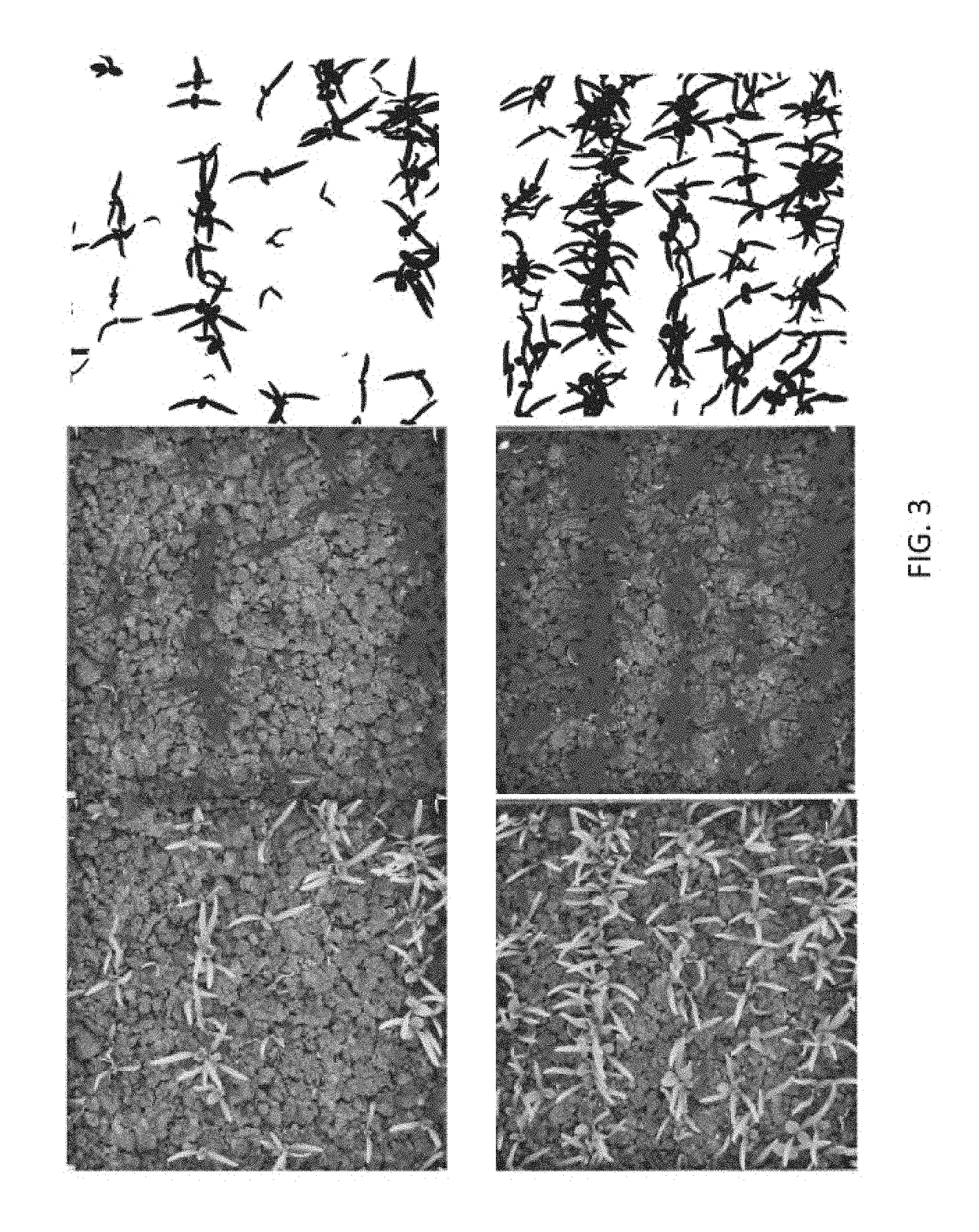Anti-fungal seed treatment formulations, treated seeds, and methods
a technology of antifungal and seed, applied in the field of seed treatment formulations and treated seeds, can solve the problems of increased food prices for consumers, poor germination and root establishment in infected fields, and substantial economic loss for growers, and achieve the effect of efficient and cost-effective treatmen
- Summary
- Abstract
- Description
- Claims
- Application Information
AI Technical Summary
Benefits of technology
Problems solved by technology
Method used
Image
Examples
example 1
[0054]The seed treatment formulation consists of the materials listed in Table 1, which are incrementally mixed, over a period of several minutes, in the indicated amounts to form a solution. The material is fully mixed for an additional 30 minutes before application by film coating to approximately 1.00 lb. of spinach seeds. The coated spinach seeds are subsequently dried to 6-7% moisture content. In this example, while the copper (II) hydroxide used is 77% pure, the weight percent of copper (II) hydroxide is 8.6%
[0055]
TABLE 1Wt. % (TotalIngredientFormulation)Water71.4%Zinc Sulfate16.2%Lignosulfonate Soil1.3%ConditionerFiber Gum1.6%Zeolite9.5%Copper (II) Hydroxide8.6%(77%)
example 2
[0056]Randomized 60′ split plots were planted with raw spinach seeds (control) and spinach seeds coated with the formulation of Example 1 in a commercial organic field using commercial planting methods. All seeds were sown using commercial planting methods at a depth of 0.5 to 1 cm, in 48 rows on an 80″ wide bed at 3-4 million seeds per acre. Spinach varieties Yukon and Castillo are shown in FIG. 1 (“CT”=castillo treated; “CR”=castillo raw; “YT”=yukon treated; “YR”=yukon raw), which illustrates crop density 6 days after planting.
[0057]Image analysis of canopy coverage is shown in FIG. 2-7. Images shown in FIGS. 2-4 were taken using software comparable to ImageJ or Canopeo (iPhone-compatible app), with reversal of image color to enable pixel count and subsequent area determination. As shown in FIGS. 5-7, canopy development was significantly (P=0.05) faster with treated spinach seed during first 2 weeks from sowing in both Callisto and Yukon varieties. Additionally, canopy area was si...
example 3
[0058]Randomized 60′ split plots were planted with raw spinach seeds (control) and spinach seeds coated with the formulation of Example 1 in a commercial organic field using commercial planting methods. All seeds were sown using commercial planting methods at a depth of 0.5 to 1 cm, in 48 rows on an 80″ wide bed at 3-4 million seeds per acre. Spinach varieties Yukon and Castillo are shown in FIG. 8 (“CT”=castillo treated; “CR”=castillo raw; “YT”=yukon treated; “YR”=yukon raw), which illustrates crop density 9 days after planting.
[0059]Image analysis of canopy coverage is shown in FIG. 9-13. Images shown in FIG. 9 and FIG. 10 were taken using software comparable to ImageJ or Canopeo (iPhone-compatible app), with reversal of image color to enable pixel count and subsequent area determination. As shown in FIGS. 11-13, early canopy development was significantly (P=0.05) faster with treated spinach seed. Treated Callisto and Yukon seed showed significantly (P=0.05) faster development dur...
PUM
| Property | Measurement | Unit |
|---|---|---|
| time | aaaaa | aaaaa |
| temperature | aaaaa | aaaaa |
| weight percent | aaaaa | aaaaa |
Abstract
Description
Claims
Application Information
 Login to View More
Login to View More - R&D
- Intellectual Property
- Life Sciences
- Materials
- Tech Scout
- Unparalleled Data Quality
- Higher Quality Content
- 60% Fewer Hallucinations
Browse by: Latest US Patents, China's latest patents, Technical Efficacy Thesaurus, Application Domain, Technology Topic, Popular Technical Reports.
© 2025 PatSnap. All rights reserved.Legal|Privacy policy|Modern Slavery Act Transparency Statement|Sitemap|About US| Contact US: help@patsnap.com



